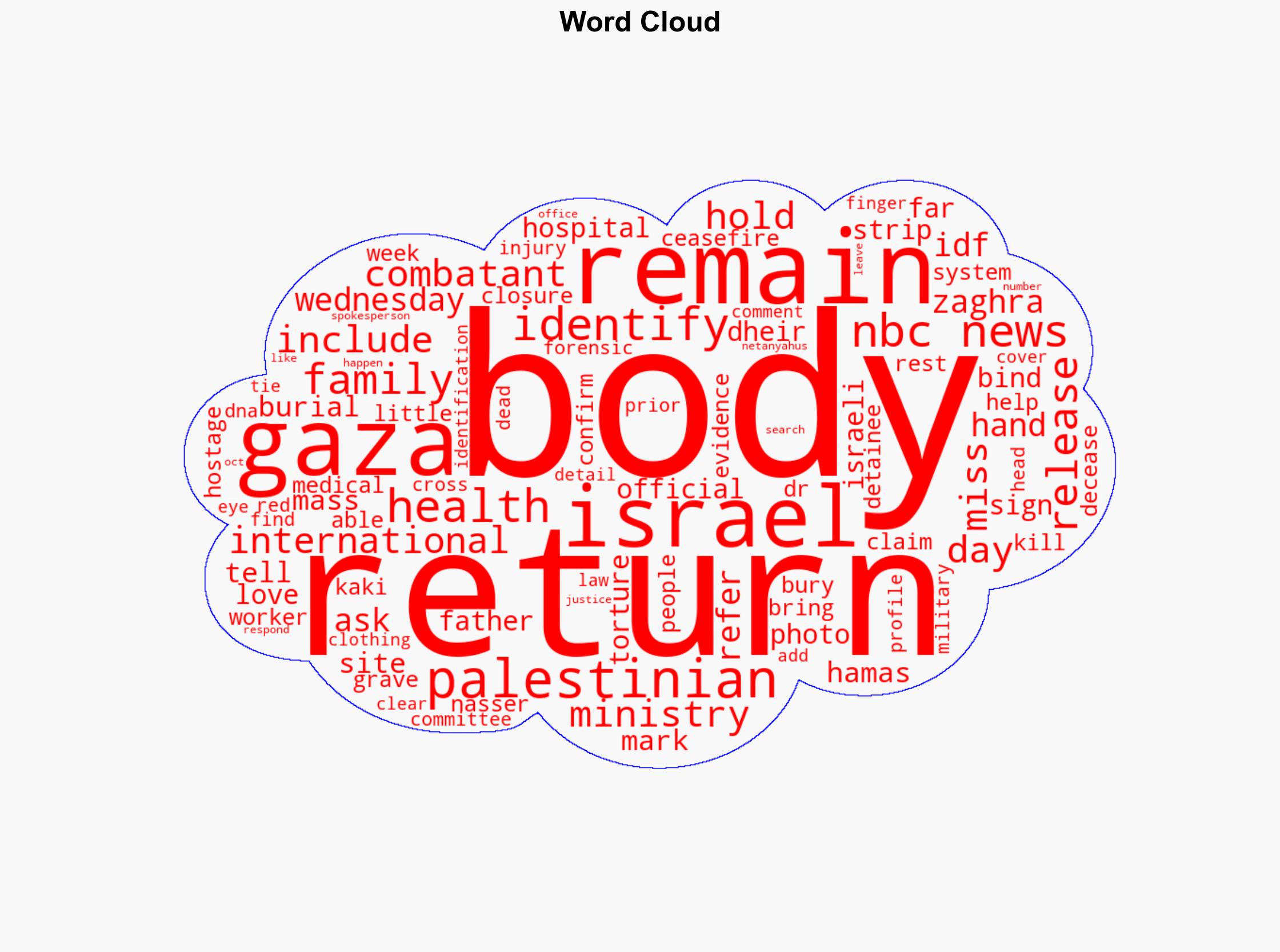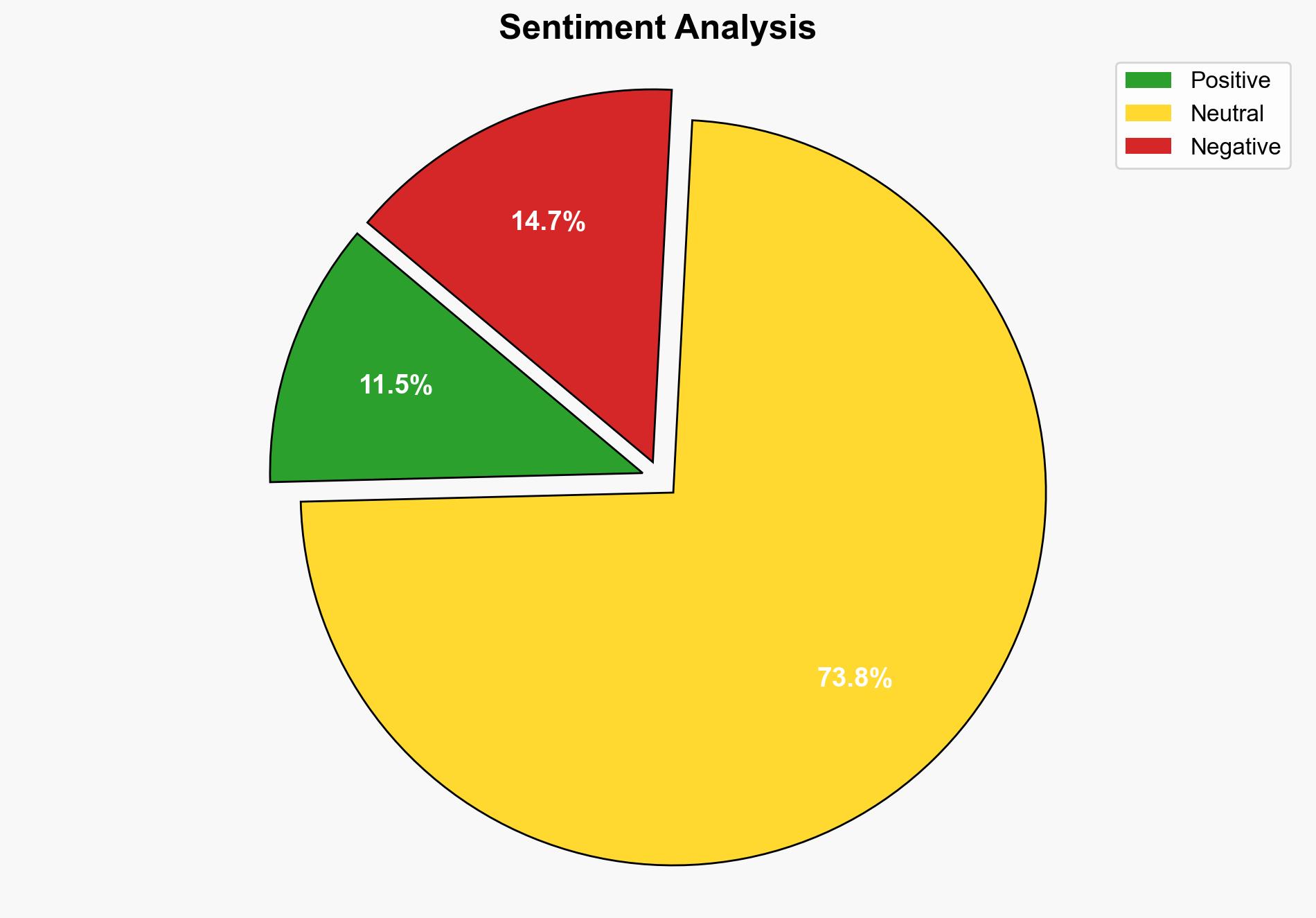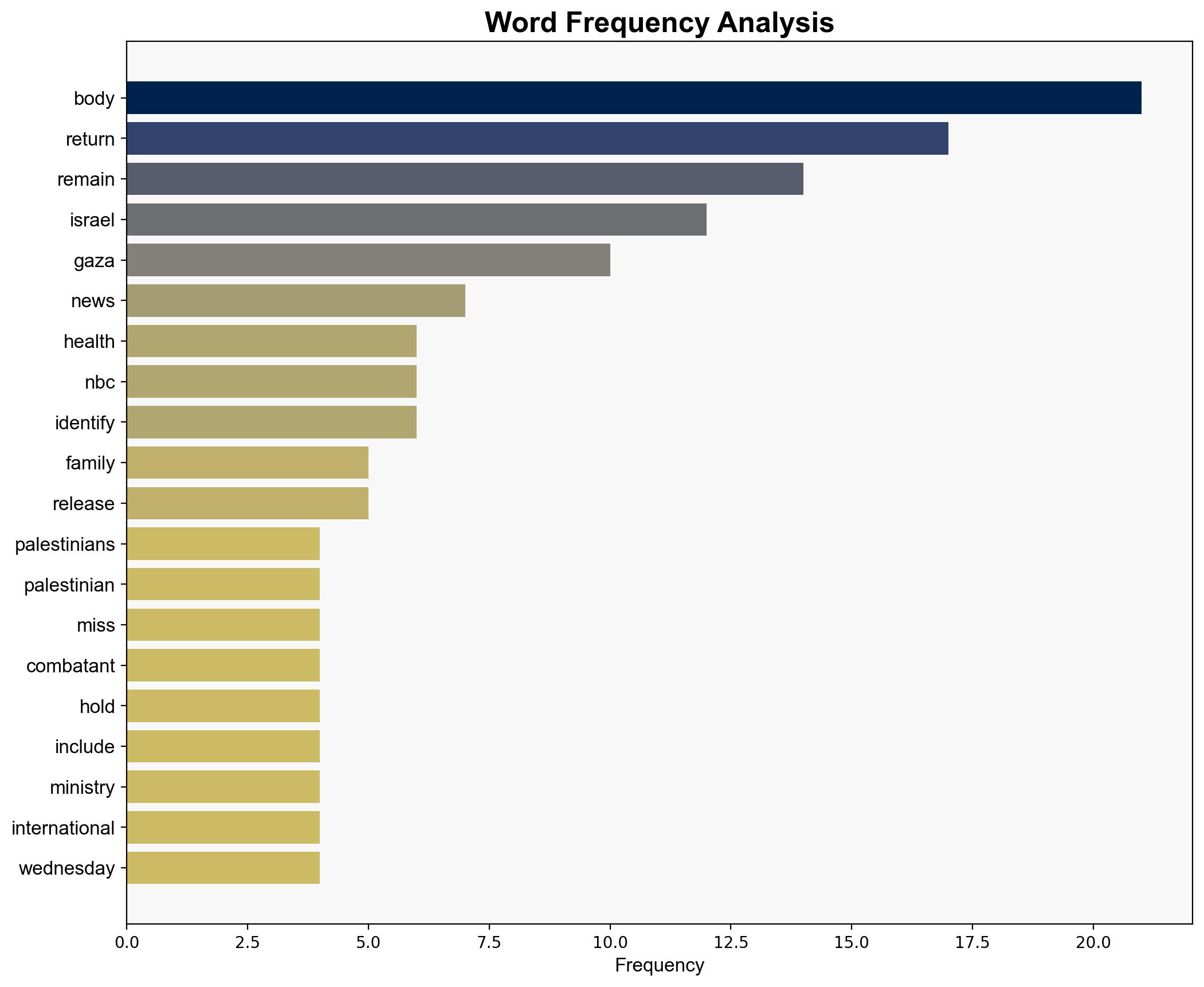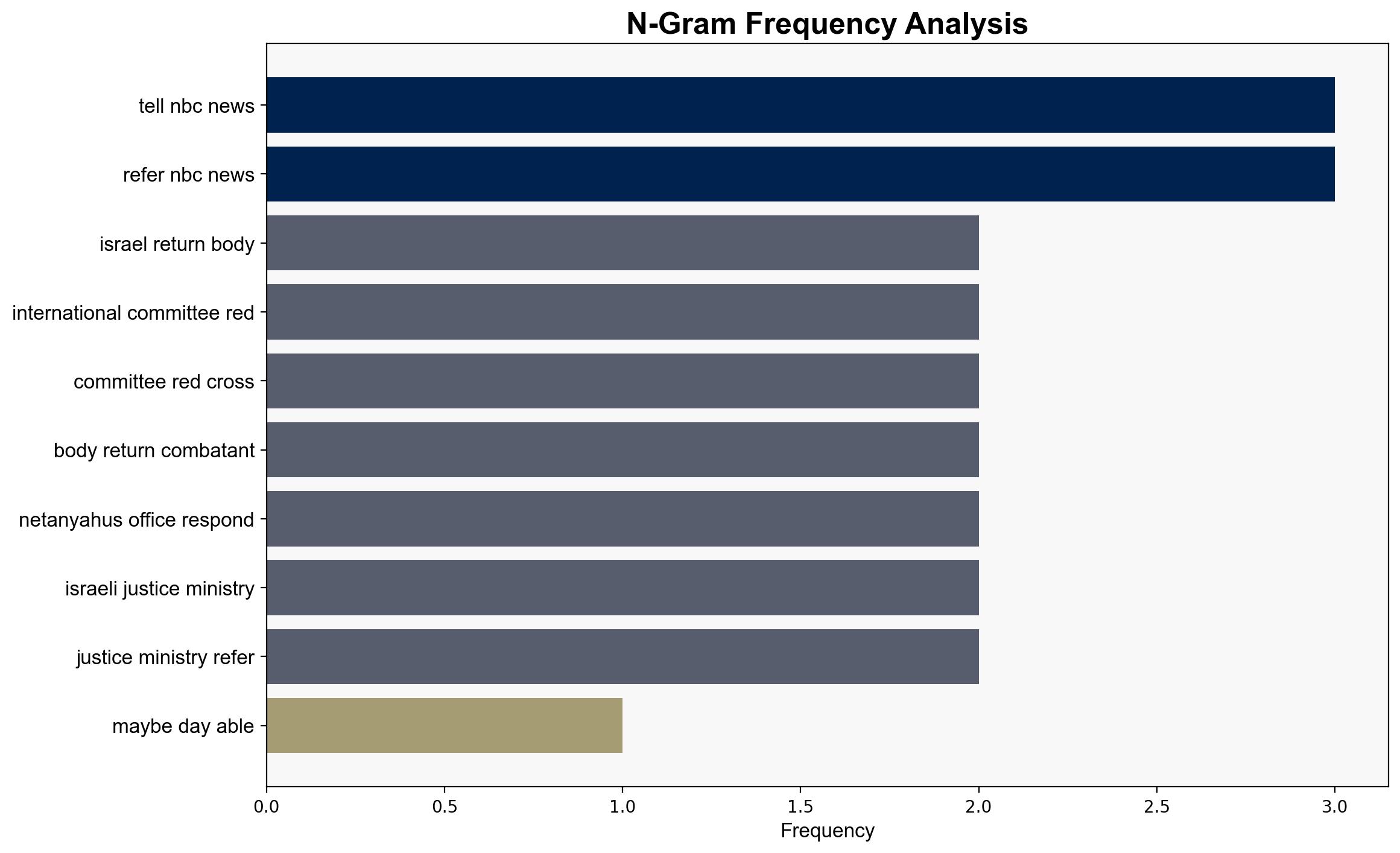In Gaza a mass burial offers little closure and new questions – NBC News
Published on: 2025-10-25
Intelligence Report: In Gaza a mass burial offers little closure and new questions – NBC News
1. BLUF (Bottom Line Up Front)
The most supported hypothesis is that the bodies returned to Gaza show signs of mistreatment, potentially indicating violations of international law. This conclusion is based on forensic evidence and eyewitness accounts. Confidence level is moderate due to limited access to independent verification. Recommended action includes international pressure for transparent investigations and enhanced monitoring of prisoner exchanges.
2. Competing Hypotheses
Hypothesis 1: The bodies returned to Gaza were subjected to mistreatment and possible torture, as indicated by forensic evidence and eyewitness accounts.
Hypothesis 2: The bodies were not mistreated, and the injuries observed are consistent with combat-related activities or post-mortem handling.
Using ACH 2.0, Hypothesis 1 is better supported due to the consistency of injury descriptions with known signs of torture and the lack of alternative explanations for the specific types of injuries observed.
3. Key Assumptions and Red Flags
Assumptions include the reliability of eyewitness accounts and the accuracy of forensic assessments under constrained conditions. Red flags involve potential bias in reporting from both Palestinian and Israeli sources, and the absence of independent forensic verification. The lack of detailed identification processes raises concerns about the integrity of the information.
4. Implications and Strategic Risks
The situation could exacerbate tensions between Israel and Gaza, potentially leading to renewed hostilities. There is a risk of international condemnation and increased scrutiny on Israel’s handling of detainees. The psychological impact on families and communities in Gaza could fuel further unrest and radicalization.
5. Recommendations and Outlook
- Encourage international bodies to conduct independent investigations into the treatment of detainees.
- Facilitate dialogue between Israeli and Palestinian authorities to improve transparency in prisoner exchanges.
- Scenario Projections:
- Best Case: Independent investigations lead to improved treatment protocols and reduced tensions.
- Worst Case: Escalation of violence due to perceived injustices, leading to broader regional conflict.
- Most Likely: Continued diplomatic pressure with sporadic violence and ongoing negotiations.
6. Key Individuals and Entities
Moureen Kaki, Dr. Mohammed Zaqout, Dr. Ahmed Dheir, Benjamin Netanyahu
7. Thematic Tags
national security threats, human rights, international law, regional focus




